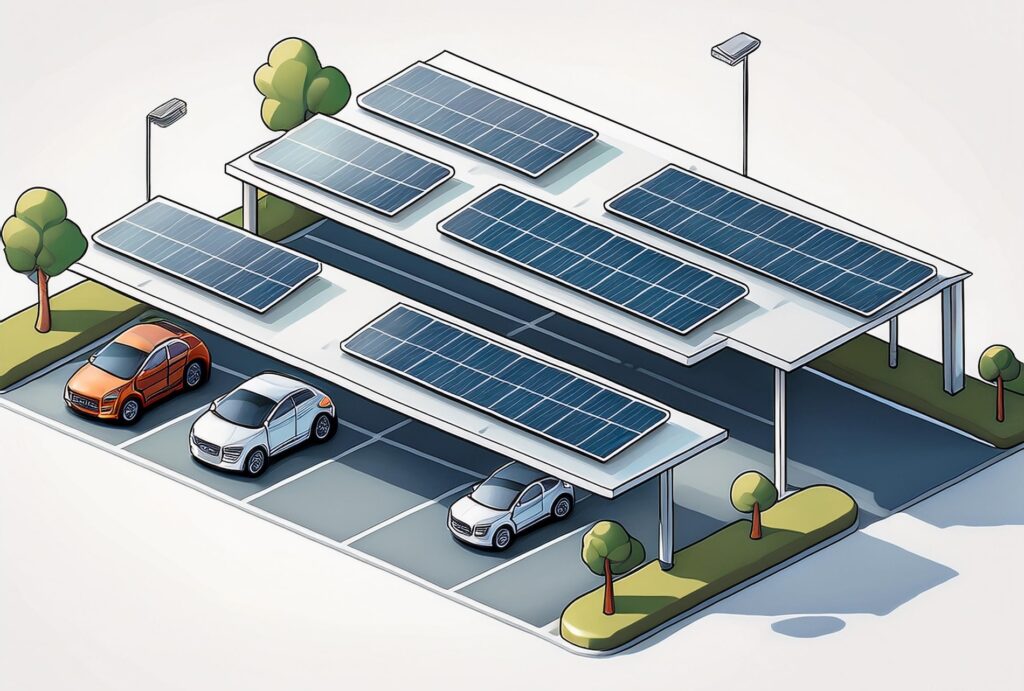How Solar Parking Lots Contribute to the Future of Renewable Energy
As solar power continues to gain momentum, innovative ideas like solar panel parking lots offer clean energy generation with shaded parking solutions.

The shift toward renewable energy remains strong, with solar power leading the charge as one of the fastest-growing energy sources in the United States. The increase in solar installations reflects a growing demand for clean, renewable energy among homeowners and businesses. One of the more recent innovations could combine clean energy generation with accommodation and protection for vehicles.
The Rise of Solar Power in the U.S.
With more than 700,000 home solar systems installed in 2022, the US has been steadily increasing its transition to solar power. The following year saw an additional increase, contributing to a national solar capacity that can meet the energy needs of 25 million homes. Several benefits to help with the overall cost have also been implemented.
According to a report by Market Watch, homeowners who invest in solar panels can achieve a payback period of less than six years, especially in areas with high electricity tariffs. High-quality solar panels also offer a product warranty of 25-30 years, making them a viable option for long-term investment. These investment benefits coupled with the reduced carbon emissions help new customers afford the transition period.
However, one of the most important decisions when transitioning to solar energy is determining the best location for the photovoltaic (PV) array and inverter. While roof-mounted systems are the most popular choice, an alternative solution is gaining traction known as solar carports.
The Benefits of Solar Panel Parking Lots
Solar panel parking lots, also known as solar carports, are canopies fitted with photovoltaic panels, installed over parking areas to provide shaded parking while generating electricity. They operate similarly to ground-mounted PV systems but use taller structures to accommodate vehicles.
Rooftop installations tend to be constrained by the orientation and tilt of the existing roof, while solar carports can be designed to maximize sunlight exposure. This utilization also removes the need to place loads of solar panels on large spans of farmland or surrounding nature.
The growing interest in solar carports has led to large-scale projects such as the solar carport canopy at JFK International Airport in New York. According to an article by Electrek, this project is New York State’s largest onsite solar plus storage initiative, providing covered parking for 3,000 vehicles and generating enough electricity to power the AirTrain and surrounding low-income neighborhoods.
Once operational, the 12-megawatt (MW) solar canopy at JFK will reduce CO2 emissions by more than 6,000 tons annually, which is equal to the emissions from around 1,500 gas cars per year. The project will also include a 6-MW community solar generation facility and 7.5 MW of battery storage, which will help ensure a steady supply of energy during peak usage periods.
This project also demonstrates the potential of solar carports to provide economic opportunities and energy savings to disadvantaged communities. Kevin O’Toole, chairman of the Port Authority, described how the project aligns with the agency’s commitment to reaching net-zero emissions by 2050, making sustainability a priority of future infrastructure development.
The Challenges and Costs of Solar Carports
One of the main drawbacks of the initiative is the cost. According to MarketWatch, solar carports are typically more expensive than traditional rooftop solar installations, with an average cost of $3.31 per watt compared to $2.81 per watt for rooftop systems. This 18% cost difference is due to the need for a dedicated structure to support the panels, thus adding to the overall installation expenses.
For example, a 6-kilowatt (kW) solar panel carport can cost around $19,860, compared to $16,860 for a similarly sized rooftop system. However, some states offer specific incentives for solar carports. New York’s NY-Sun Megawatt Block Program and Massachusetts’ SMART Program provide bonus incentives, which help lower the cost of the initial investment. This allows the solar carports to be implemented in a variety of settings, from shopping centers and office complexes to residential areas and schools.
Another challenge comes with the potential for solar carports to contribute to energy storage solutions. By pairing solar panels with battery storage systems, excess energy generated during the day can be stored and used during peak demand periods. This could also be used for electric vehicles, allowing on-site recharging, reducing strain on the grid, and promoting clean energy for transportation.
The decision for cities to invest in a solar carport would need to be based on individual circumstances, including budget, available space, and energy needs. With the right incentives and design approach, solar carports can be one of the leading innovations in the transition to renewable energy by offering both economic and environmental benefits.
